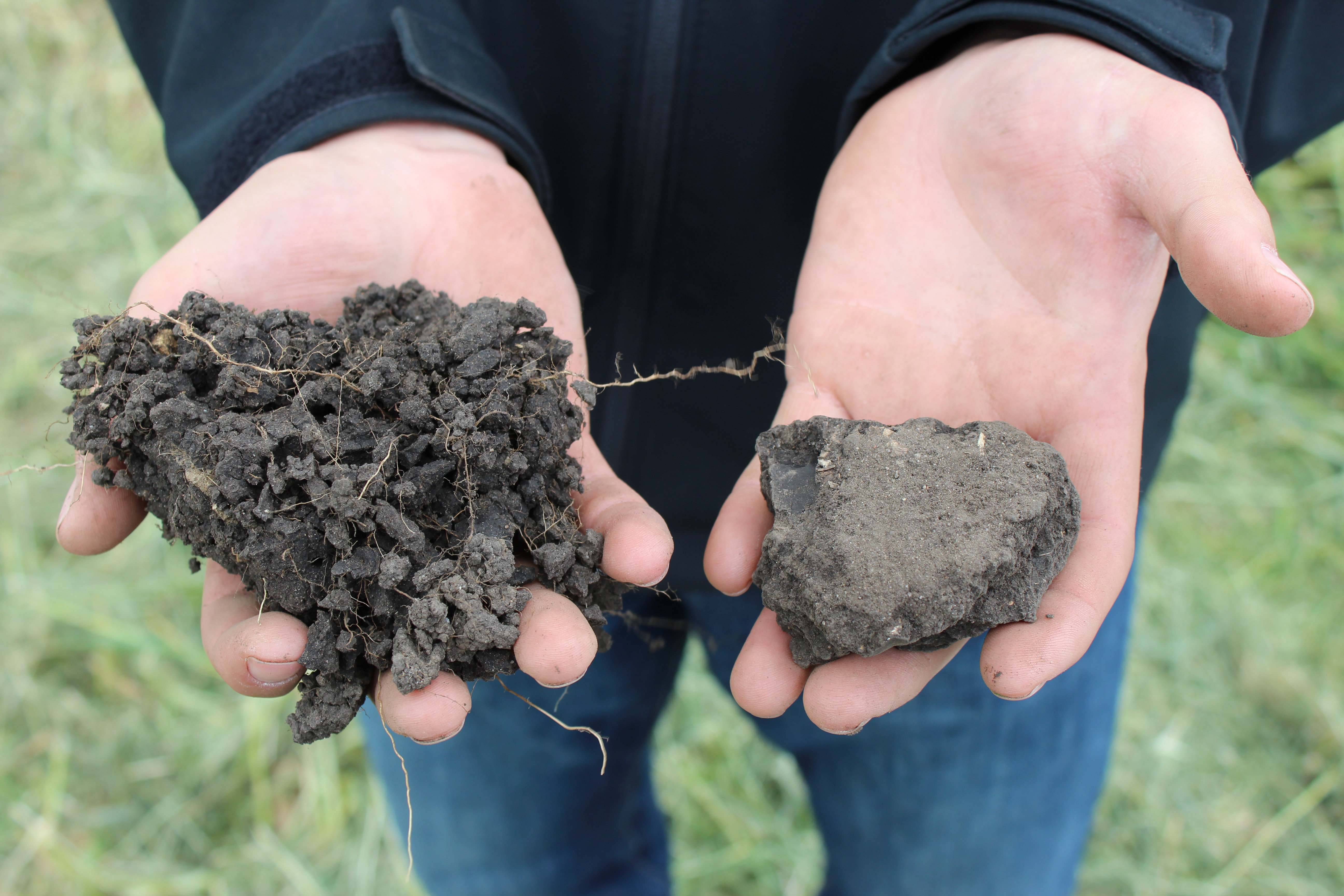Marla Riekman, Soil Management Specialist, Manitoba Agriculture
SOIL IS MORE than its short, four-letter name might imply. Without soil, we have no agriculture, and without agriculture, we have no food. Simply put — without soil, we cannot exist. Soil is so important to us that in 2015 the United Nations Food and Agriculture Organization named it the International Year of the Soil. The key messages were this: soil is the foundation of crop production and the basis for healthy food, soils store water making us more resilient to floods/droughts and help adapt to climate change, and soil is a non-renewable resource that we need to preserve for the long-term sustainability of agriculture.
Soil health is more than just a single measurement of soil quality, but instead is the culmination of the physical, biological and chemical properties of soil. All three properties are required to make a healthy soil — soil physical properties like porosity ensure infiltration of water after a heavy rain, soil microbes are necessary to break down crop residues into organic matter and release nutrients, and cation exchange capacity holds and supplies nutrients for crop uptake. Take away one of these properties and the soil will no longer function as well to support crop growth.
There are a number of soil health measurements, but my favourites are crop growth/yield, soil organic matter and soil structure.
These simple, relatively easy-to-obtain measurements say a lot about soil function. Almost every farmer has a yield monitor, and even if no monitor exists, you will certainly know where your poor-yielding areas of the field are. Obviously, something is wrong in those areas, so they give you a good indication that further investigation needs to take place to understand why yield is poor. If you change management and yield goes up in those areas, you can assume that the soil is improving.
If you soil sample regularly, look at the soil organic matter measurement on your soil test. Soil organic matter increases at a relatively slow pace, so you will not see dramatic changes from year to year, but you do want to watch that levels are increasing rather than decreasing over time. Soil organic matter helps to supply nutrients, hold water and improve soil structure. Even subtle changes in organic matter levels lead to a healthier soil. Organic matter also aids in soil warming as the soil generally becomes darker in colour as organic matter increases. Tillage breaks down organic matter, so any practices that reduce tillage and increase biomass production will build organic matter over time.
Soil structure is not easily measured through routine lab tests, although some soil testing labs offer aggregate stability analysis.
However, you can assess soil structure on your own by using something as simple as your eyes and a spade! Look to see how water ponds on the field after a rain. Does it infiltrate quickly? Or does it erode the soil creating rills and gullies as it runs off? Does the soil form a crust easily as the sun dries out the surface following a heavy rain? It is also very easy to feel the resistance of compacted layers when digging in the field. Take a shovel full of soil and break it up with your hands. Does it crumble easily into smaller chunks or aggregates? Do you see the presence of larger pores made by roots or earthworms that would allow for water movement?
Soil texture is another measure of soil health, but unlike soil structure and organic matter, soil texture is not something that changes with management. Soil texture will influence the overall health of the soil, which is why it is an important measure. You need to know what soil texture you are working with to have a better understanding of how the soil may improve as you make changes to your cropping system. Texture will influence the ability to build soil aggregates — clay particles are microscopic building blocks of soil aggregates, so soils with low clay content (i.e., sands) will be limited in their ability to create stable aggregates. Sandy soils are typically lower in organic matter and do not build organic matter levels as quickly. Sandy soils also have less ability to hold water, so their yield potential will be lower than soil with higher clay content. Since soil texture has a large influence on soil health measurements (such as structure, organic matter and yield), it’s important to avoid comparing soil health across soil textures — a sandy loam will not have the same “health potential” as a clay loam, so the same change in soil management will not yield the same level of soil health improvement.
Soil building practices include anything that increases the amount of biomass returned to the soil and decreases soil disturbance. By implementing practices like reduced tillage, cover crops, perennial cover, etc. we will see changes in soil structure, organic matter and crop growth and yield. However, these are long-term changes that will require long-term solutions — soil health will not improve overnight! With long-term solutions, our soils will become more resilient to flood and drought conditions, better able to withstand wind and water erosion, and remain more productive for future generations.

